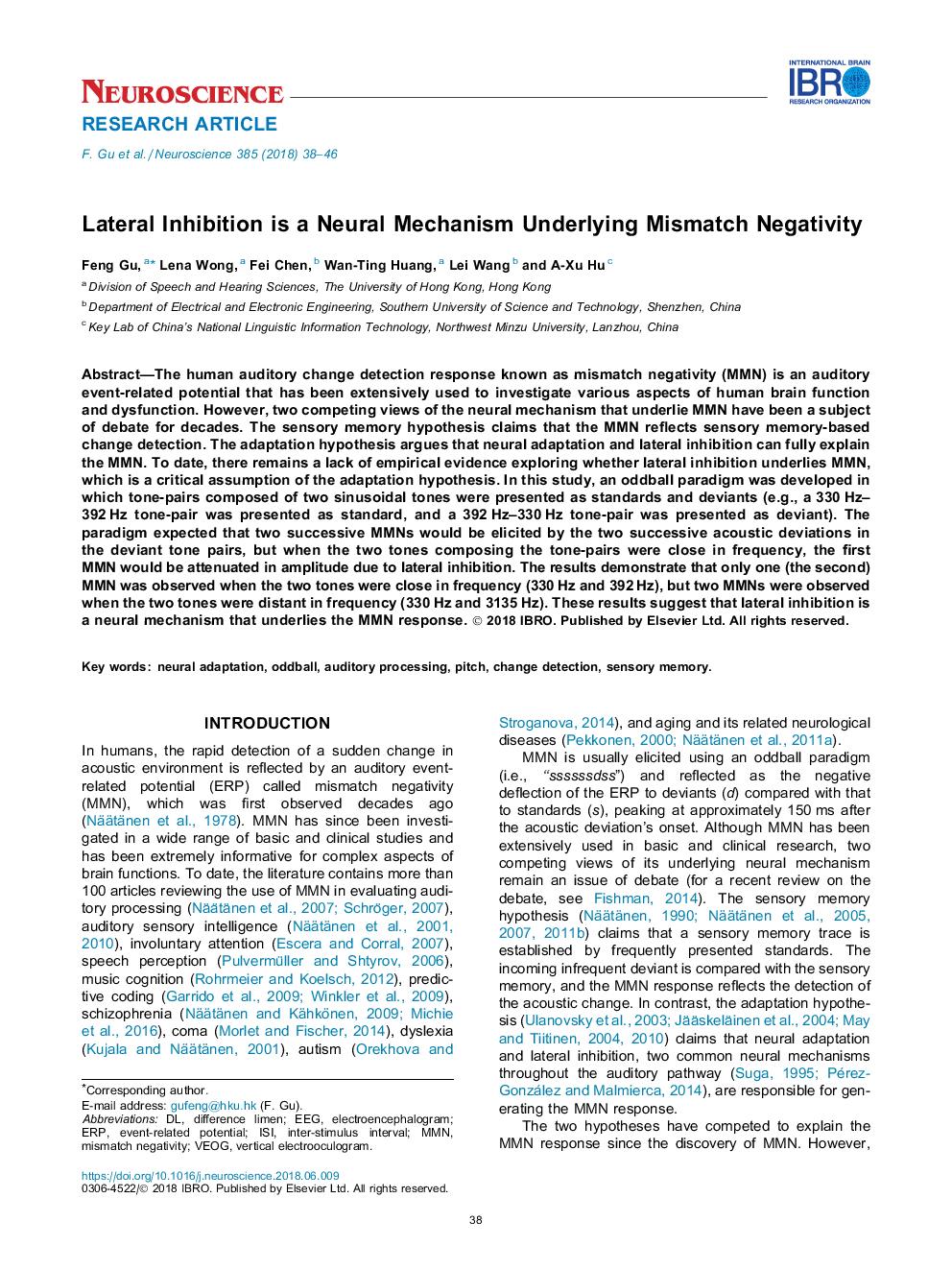| Article ID | Journal | Published Year | Pages | File Type |
|---|---|---|---|---|
| 8840581 | Neuroscience | 2018 | 9 Pages |
Abstract
The human auditory change detection response known as mismatch negativity (MMN) is an auditory event-related potential that has been extensively used to investigate various aspects of human brain function and dysfunction. However, two competing views of the neural mechanism that underlie MMN have been a subject of debate for decades. The sensory memory hypothesis claims that the MMN reflects sensory memory-based change detection. The adaptation hypothesis argues that neural adaptation and lateral inhibition can fully explain the MMN. To date, there remains a lack of empirical evidence exploring whether lateral inhibition underlies MMN, which is a critical assumption of the adaptation hypothesis. In this study, an oddball paradigm was developed in which tone-pairs composed of two sinusoidal tones were presented as standards and deviants (e.g., a 330â¯Hz-392â¯Hz tone-pair was presented as standard, and a 392â¯Hz-330â¯Hz tone-pair was presented as deviant). The paradigm expected that two successive MMNs would be elicited by the two successive acoustic deviations in the deviant tone pairs, but when the two tones composing the tone-pairs were close in frequency, the first MMN would be attenuated in amplitude due to lateral inhibition. The results demonstrate that only one (the second) MMN was observed when the two tones were close in frequency (330â¯Hz and 392â¯Hz), but two MMNs were observed when the two tones were distant in frequency (330â¯Hz and 3135â¯Hz). These results suggest that lateral inhibition is a neural mechanism that underlies the MMN response.
Keywords
Related Topics
Life Sciences
Neuroscience
Neuroscience (General)
Authors
Feng Gu, Lena Wong, Fei Chen, Wan-Ting Huang, Lei Wang, A-Xu Hu,
